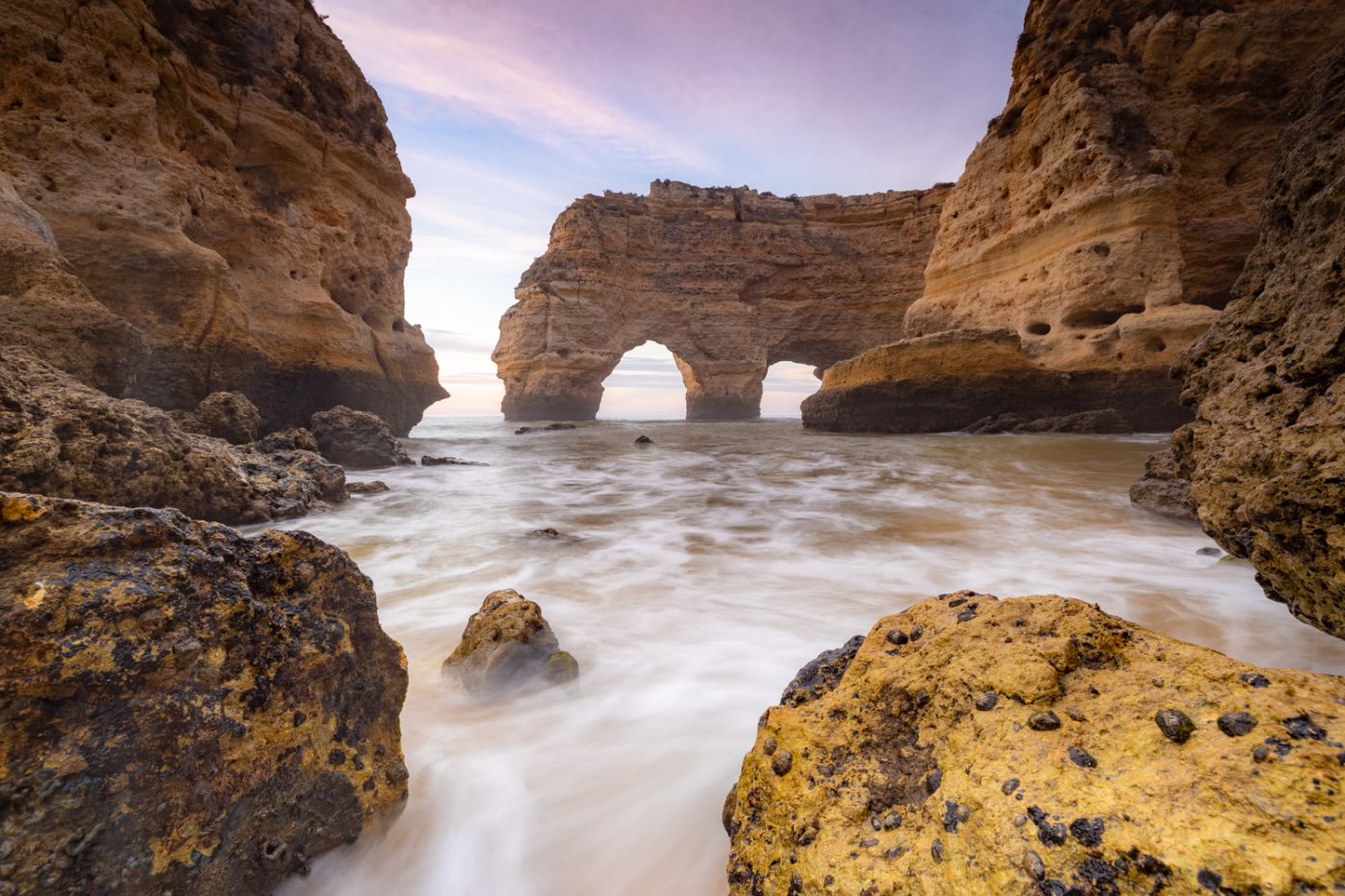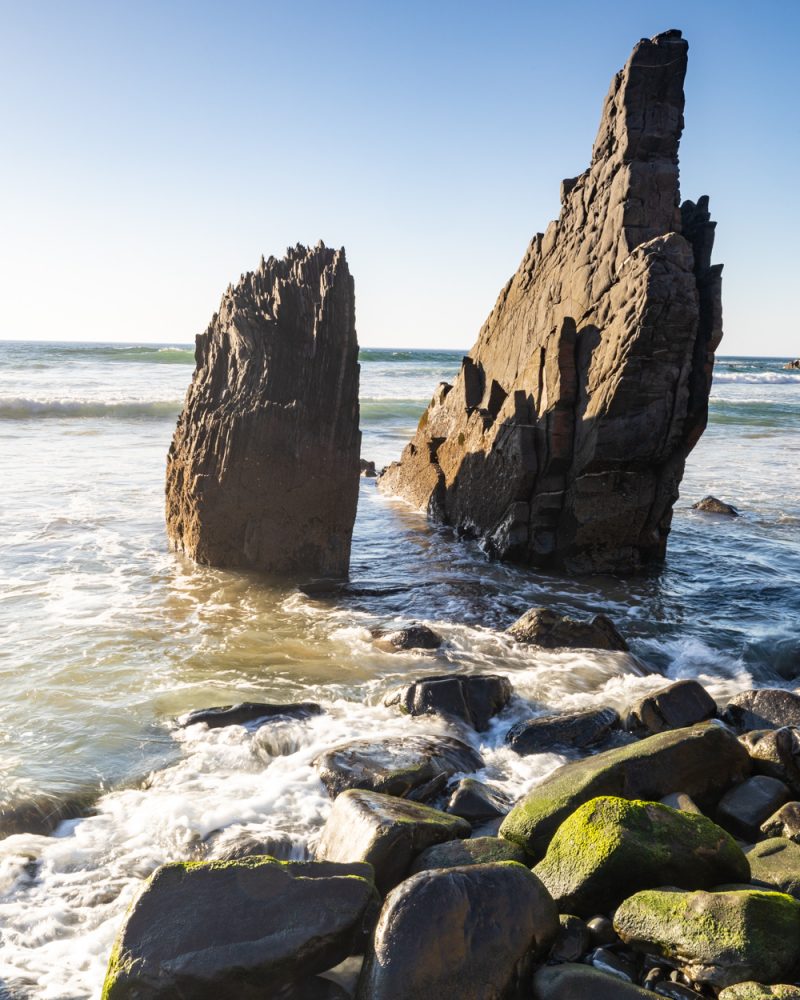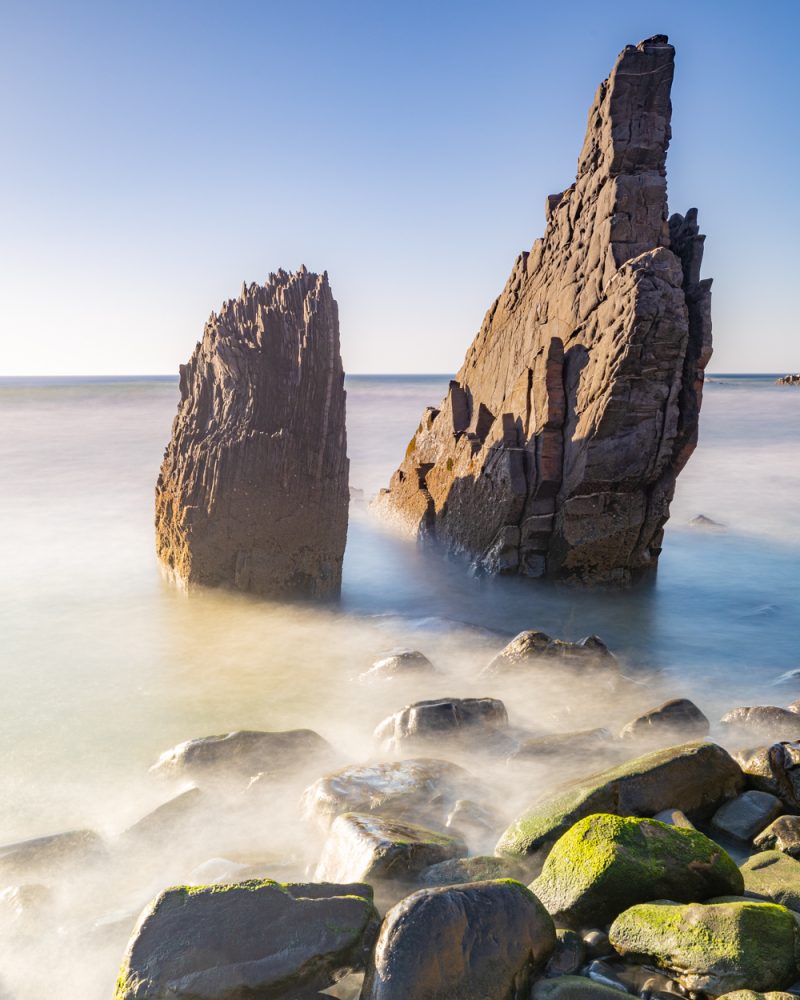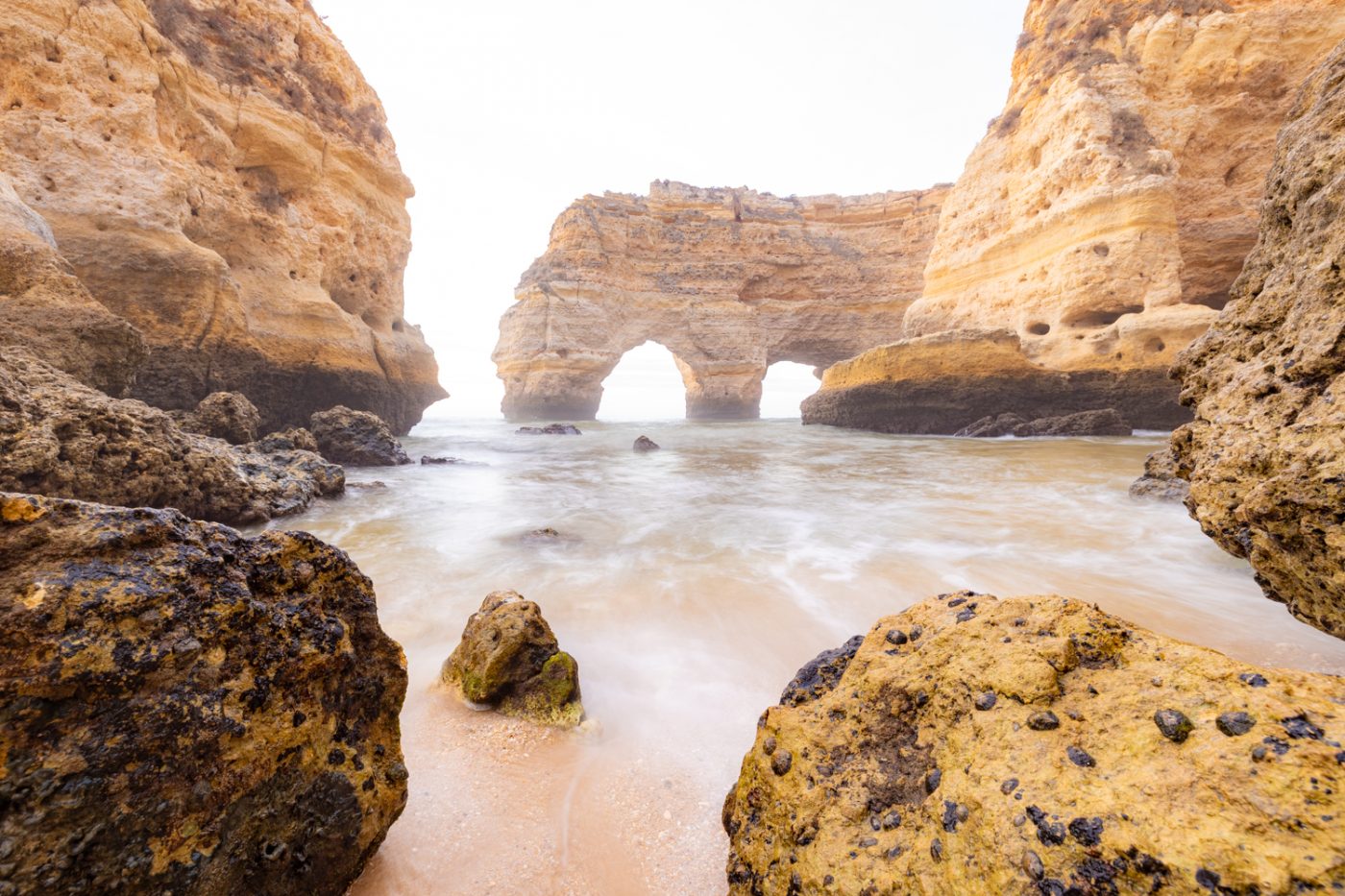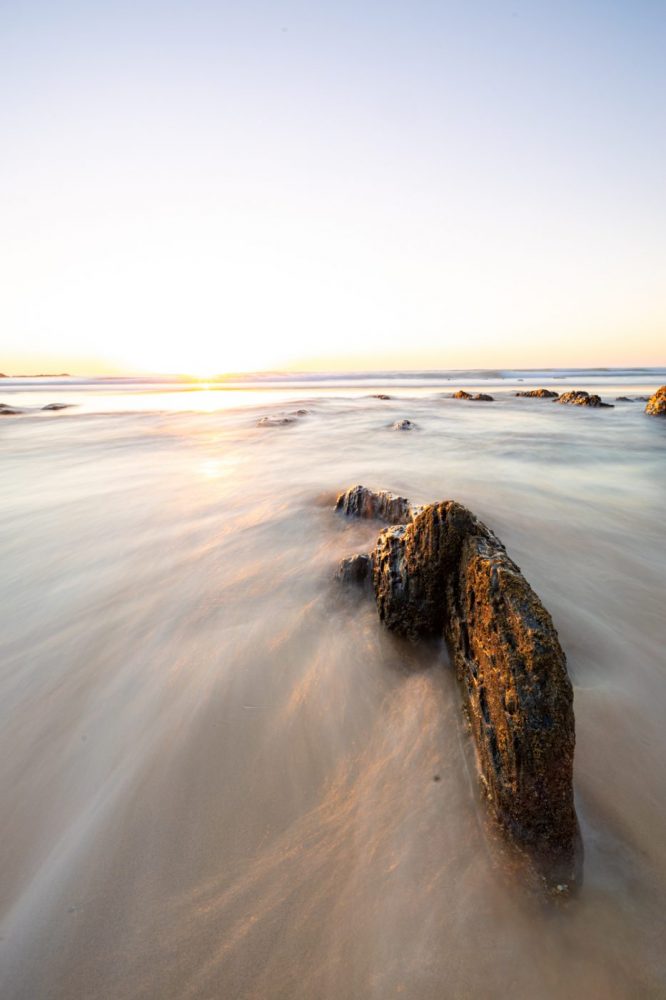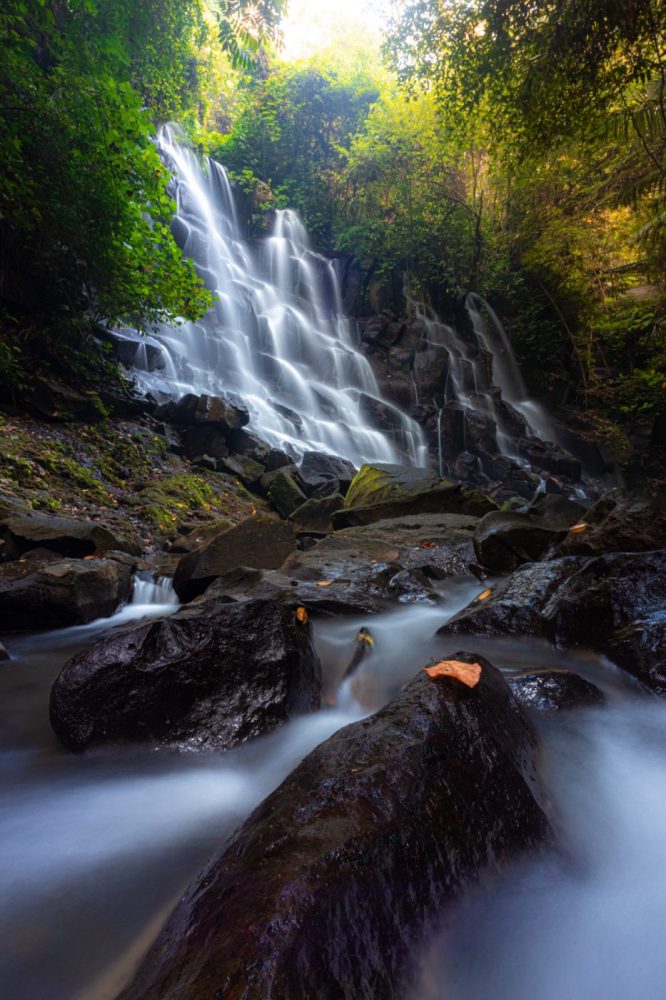I hear photographers so often say things like “you don’t really need filters for seascape photography”. And, while I don’t disagree – sure, you can make photos without filters – there are a lot of things you just can’t do in seascape photography if you don’t have filters.
In this post, I’m going to walk you through the four filters I find absolutely invaluable for this type of photo-making. And while there are a lot of “photoshop tricks” there are some things you just need filters for.
Types of Filters
You can see all the camera equipment I use over on my camera gear page. What you don’t see is how often I use each piece of gear. If I did, filters would be up at the top with the camera body itself. I almost always have a filter on my lens – no matter what type of photography. I mean, I even use them when I’m doing sport or street photography. With seascape photography, I don’t know how I’d live with out them.
There are 4 types of filters I use almost every seascape photo shoot:
- ND Filters
- Graduated ND Filters
- Reverse Grad ND Filters
- Polarizers.
ND Filters
Let’s start by talking about ND filters in general.
ND refers to Neutral Density. Meaning it’s a densely coloured piece of glass that’s meant to be neutral in colour (grey). Essentially, it’s sunglasses for your camera. It reduces the amount of light that makes it to your camera’s sensor.
In seascape photography, the main goal of reducing the light to the sensor is to be able to slow down the shutter speed, allowing for longer exposure images.
The most common ND filters are 3, 6, and 10 stops. Which means, for example, that if you normally had an exposure of 1/100th of a second, the NDs would allow you to slow the shutter speed to 1/13, 0.6, and 10 seconds respectively.
Grad ND Filters
A grad ND filter is a piece of glass that is coated half as an ND and half clear. The goal of a grad ND filter is to even out the light in scenes that might have a bright and dark part. Around sunrise and sunset, this is almost always the case – with the sun still lighting the sky, but the landscape in the shade.
The term “grad” refers to the gradient in the filter. In general, there are 3 types of gradient: soft, medium, and hard. Those designations just mean how sharp the gradient between dark and bright is. If you have a hard line between the bright and dark part of an image, a hard grad will work best. But, if there are mountains, or other items in the middle of the transition, a soft grad is likely better.
Grad filters traditionally come in 1, 2, 3, and 4 stop varieties. However, I personally find the 1-stop grads to be pointless.
Reverse Grad ND Filters
Very similar to regular grad ND filters, reverse grad NDs are split between dark and clear halves. The difference is that on a reverse grad, the “grad” is a hard line. Then, on the dark half of the filter the darkness of the filter gets gradually brighter towards the edge.
These types of filters are pretty niche and used most often in seascape photography to photograph setting or rising suns.
The reason you might want one is because while the sun is still in the sky, if you’re taking pictures right into it, the brightest part of the sky is the sun itself. Thus, putting the darkest part of the grad right on the sun and getting brighter above it makes for the most even exposure.
Polarizers
Like a pure ND filter, you can’t fake polarization in photoshop. As such, a polarizer is such a valuable piece of kit.
The whole point of a polarizer is to cut reflection. They can be used for a bunch of different things. They can make forests more green as they cut out the reflection on leaves. They can cut through the reflection on windows to let you see through. Or, they can be used to cut through the reflection on clear water to see what’s below.
In seascape photography, they’re used so often to cut the light reflection off the sea and allow the photo to show what’s below the water as well. They also cut reflection off of glistening rocks, making them more impactful subjects.
Square vs. Round Filters
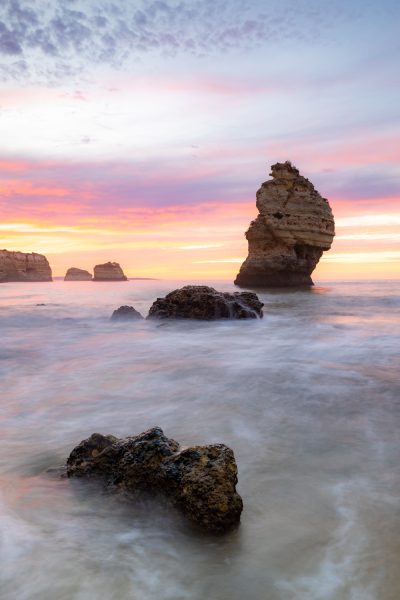
When you’re buying filters, you have the choice between circular screw-on filters, or square filters. At first glace, the square filters seem bulky, and expensive. But, personally, I think they’re the way to go.
With round filters, you need to buy one filter for every thread size lens you have. So, if you only have 1 lens, it might make sense. But, if you have 4 different lenses, and they all have different thread sizes, it can get expensive. Moreover, it can get annoying as you’ll have to screw on and off the filter each time you change lenses. The square system uses an adapter that simply pops on and off the lens you’re using.
Round filters are also a bit tricky if you’re using graduate NDs. The line of the graduation will almost definitely be right in the middle of the lens, and doesn’t allow you to manipulate that.
It might seem like more of an investment up front – and it is – but in the long run the square filter systems will save you money and stress. I use the NiSi V6 system.
The Bare Minimum?
I get asked a lot about the bare minimum for filters. What is the absolute fewest filters I can get away with?
And while I do pack around 8-10 filters on any given day, I really do believe that you can really do anything you need with just 2 filters: a 6-stop ND, and a 3-stop medium grad ND. You might not get things perfect every time, but you’ll be within a stop or two, and should be able to make the adjustments otherwise in Lightroom.

Which Filter Brand?
I’m obliged to tell you that I’m a brand ambassador for NiSi Filters. I’ve been using them for a couple years now and I absolutely love them. One of my favourite things about them is they don’t seem to scratch as quickly. I’m not going to name and shame previous brands I used, but I used to end up with so many scratches on my filters. My NiSi ones definitely seem more scratch resistant.
I also love NiSi because of their wiliness to innovate with products like “The Switch“. So many filter brands have become content just putting glass in front of lenses. I feel like NiSi is still trying to create products that help us make better photos.

